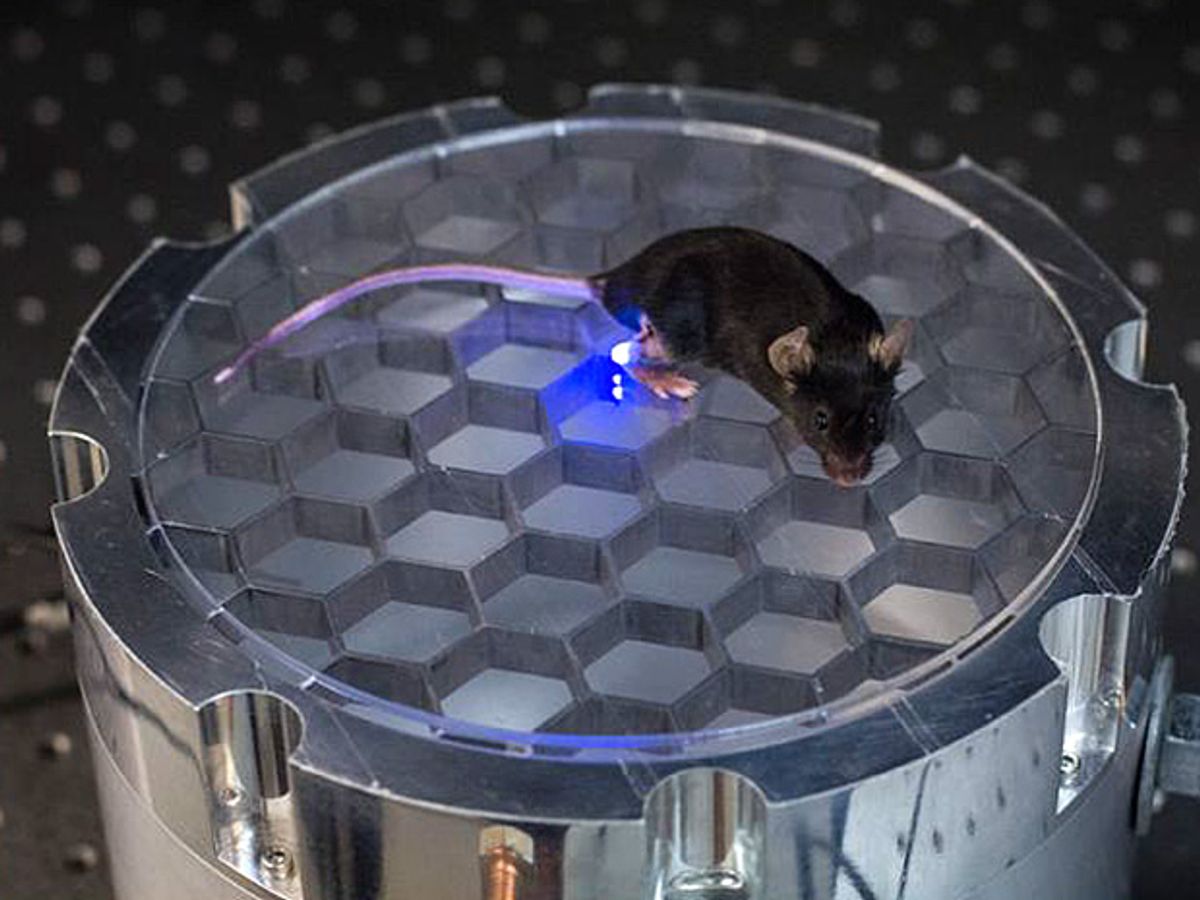Optogenetics is a marvel of our age, enabling neuroscientists to turn brain cells on and off with pulses of light. But until now there’s been an obvious difficulty: How do you deliver that light to brain cells that are tucked inside an animal’s skull?
Today we get the best answer yet, from the Stanford lab of Ada Poon. She and her colleagues have invented a tiny, wireless LED device that can be fully implanted beneath the skin of a mouse. The device lets researchers turn on the light and stimulate neurons when the mouse is scampering around, behaving more or less normally. This system, described today in the journal Nature Methods, seems a big improvement over previous technology, which used wires or bulky head-mounted devices to activate the light switch.
Here’s a quick optogenetics primer, in case you need it. The technique makes use of neurons that have been genetically altered to respond to light, often with the introduction of genes from a strain of green algae. Researchers can control which part of a mouse brain contains these light-sensitive neurons, and they can then study the function of that brain region by activating the neurons—essentially turning them on and off—while watching the animal’s behavior. Using this method, scientists can learn about basic brain anatomy or study dysfunctions seen in human diseases.
The first optogenetics systems used fiber optic cables to deliver the light, which meant the mice had wires coming out of their heads and couldn’t move around much. Over the past five years, researchers have worked on wireless systems, in which a head-mounted device receives the signal to stimulate and triggers an implanted LED. However, some of these receivers are heavier than the mouse’s actual head, according to Poon’s paper, and they interfere with the animal’s freedom of movement and interactions with other mice.
The new device, consisting of a power receiving coil, IC, and LED, weighs in at 20 to 50 milligrams (a mouse’s head is approximately 2 grams). Its tiny dimensions mean it can be implanted not only in the brain, but also in the spine or the limbs, allowing researchers to experiment with optogenetic stimulation of the spinal cord and peripheral nerves. The researchers note that the implant can be built “with readily available components and tools,” and they express hope that it will be quickly adopted by the scientific community.
In Poon’s system, the mouse is placed in a small chamber called a “resonant cavity.” The implant has a power receiving coil that extracts RF energy as it resonates with the electromagnetic field inside the chamber. Because the mouse receives the same amount of power at all locations within that space, there’s no need for tracking systems that accompany directional antennae.
Once the researchers built this system, they performed three proof-of-concept experiments to show off its abilities to stimulate brain, spinal cord, or peripheral nerves. In the brain, they stimulated the right premotor cortex, causing the mice to walk in circles around the chamber. In the spine, they demonstrated that stimulating neurons toward the top of the spinal cord affected the activity of neurons farther down the line.
Finally, for the peripheral nervous system, the researchers implanted the LED devices in the hind limbs of mice to stimulate pain-sensing neurons in the limbs. They placed the mice in a two-chamber setup, where the mice could freely move between the resonant chamber where the stimulator could be turned on, and an adjoining “safe” chamber. When the light was on, the mice showed a marked preference for the room where their legs wouldn’t hurt.
The point of these experiments were not to hurt mice, of course, but to demonstrate that neuroscience has a cool new tool, and a new way to illuminate the mysteries of the brain.
Eliza Strickland is a senior editor at IEEE Spectrum, where she covers AI, biomedical engineering, and other topics. She holds a master’s degree in journalism from Columbia University.



